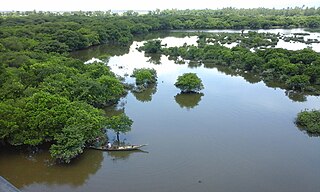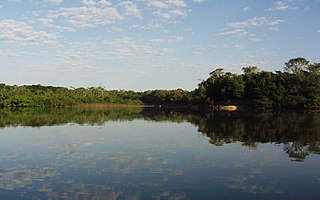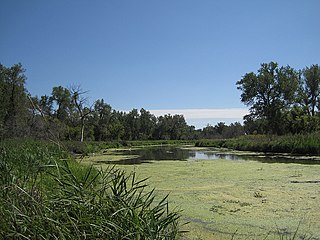The Floridian highlands freshwater marsh is a wetland community found on the Florida peninsula. These are upland marshes occurring in shallow peat-filled valleys, the basins of dried lakes, and the borders of existing lakes. The vegetation mosaic includes a range of mostly herbaceous plant communities, varying based on water depth. Deep water supports various submerged and floating plants. Approximately meter-deep supports emergent herbaceous perennials, typically in dense, monospecific stands; species include bulrush ( Typha latifolia ), pickerelweed ( Pontederia cordata ), American lotus ( Nelumbo lutea ). Shallow areas only submerged during wet season support more graminoid vegetation, including maidencane ( Panicum hemitomon ) and southern cutgrass ( Leersia hexandra ). Subsurface subsidence and changing drainage patterns make these habitats shift and change over time. Soils can be mucky, loamy, or sandy, but they are generally above permeable subsoils that create standing water much of the year. These marshes may also be called meadows or prairies. [1]

A wetland is a distinct ecosystem that is inundated by water, either permanently or seasonally, where oxygen-free processes prevail. The primary factor that distinguishes wetlands from other land forms or water bodies is the characteristic vegetation of aquatic plants, adapted to the unique hydric soil. Wetlands play a number of functions, including water purification, water storage, processing of carbon and other nutrients, stabilization of shorelines, and support of plants and animals. Wetlands are also considered the most biologically diverse of all ecosystems, serving as home to a wide range of plant and animal life. Whether any individual wetland performs these functions, and the degree to which it performs them, depends on characteristics of that wetland and the lands and waters near it. Methods for rapidly assessing these functions, wetland ecological health, and general wetland condition have been developed in many regions and have contributed to wetland conservation partly by raising public awareness of the functions and the ecosystem services some wetlands provide.

Florida is the southernmost contiguous state in the United States. The state is bordered to the west by the Gulf of Mexico, to the northwest by Alabama, to the north by Georgia, to the east by the Atlantic Ocean, and to the south by the Straits of Florida. Florida is the 22nd-most extensive, the 3rd-most populous, and the 8th-most densely populated of the U.S. states. Jacksonville is the most populous municipality in the state and the largest city by area in the contiguous United States. The Miami metropolitan area is Florida's most populous urban area. Tallahassee is the state's capital.

A marsh is a wetland that is dominated by herbaceous rather than woody plant species. Marshes can often be found at the edges of lakes and streams, where they form a transition between the aquatic and terrestrial ecosystems. They are often dominated by grasses, rushes or reeds. If woody plants are present they tend to be low-growing shrubs. This form of vegetation is what differentiates marshes from other types of wetland such as swamps, which are dominated by trees, and mires, which are wetlands that have accumulated deposits of acidic peat.
Examples include Paynes Prairie and the marshes along the Kissimmee and St. Johns River. [1]

The Kissimmee River is a river in south-central Florida, United States.

The St. Johns River is the longest river in the U.S. state of Florida and its most significant one for commercial and recreational use. At 310 miles (500 km) long, it flows north and winds through or borders twelve counties. The drop in elevation from headwaters to mouth is less than 30 feet (9 m); like most Florida waterways, the St. Johns has a very low flow rate 0.3 mph (0.13 m/s) and is often described as "lazy". Numerous lakes are formed by the river or flow into it, but as a river its widest point is nearly 3 miles (5 km) across. The narrowest point is in the headwaters, an unnavigable marsh in Indian River County. The St. Johns drainage basin of 8,840 square miles (22,900 km2) includes some of Florida's major wetlands. It is separated into three major basins and two associated watersheds for Lake George and the Ocklawaha River, all managed by the St. Johns River Water Management District.

















